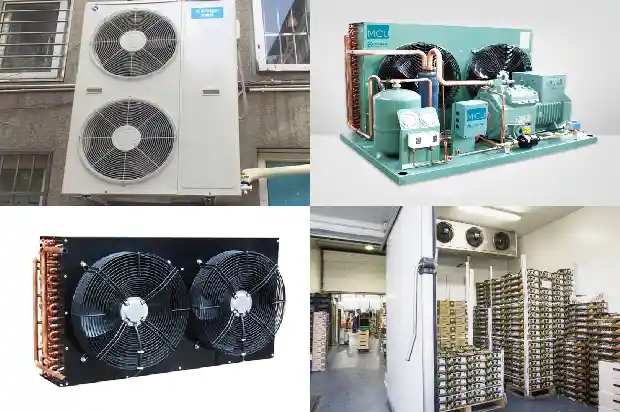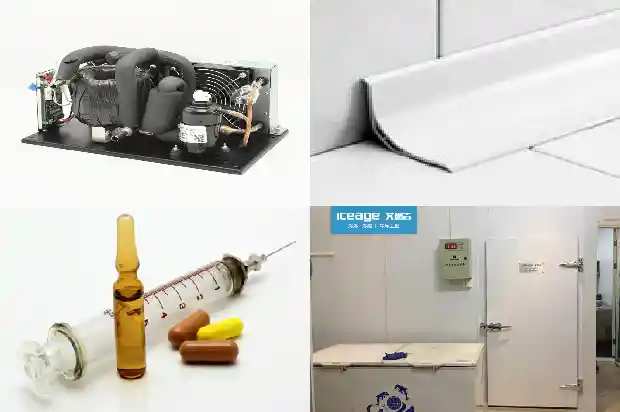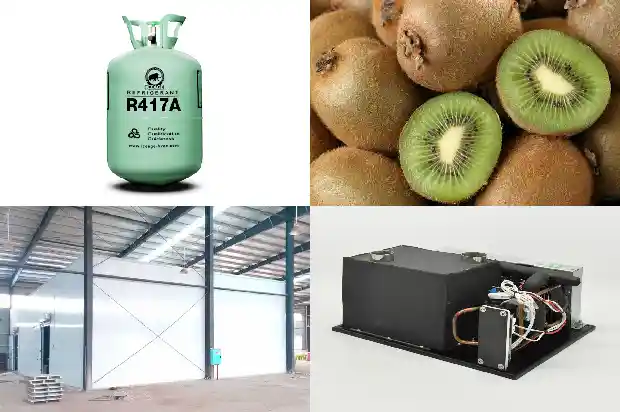How to Resolve the Scuffing Issue of Cold Storage Compressors
2025-02-16
Cylinder scuffing is one of the serious malfunctions of refrigeration machines. Although it doesn't cause personal accidents, it can have adverse effects on the technical performance and service life of the refrigeration machine. So, how to solve the problem of cylinder scuffing?
- If the assembly clearance between the piston and the cylinder is too small, the piston will expand due to heat during operation.
With insufficient clearance left, it is likely to cause cylinder scuffing. Therefore, when repairing and assembling the cold - storage compressor, the clearance between the cylinder and the piston must be assembled strictly in accordance with the specifications in the equipment manual.

- Incorrect assembly clearances and locking - opening sizes of the piston rings, along with the piston rings being installed too tightly in the ring grooves, cause the piston rings to get stuck during the compressor's operation, resulting in cylinder scuffing. If the locking - opening size of the piston ring in the cold - storage installation is too small, and it can't shrink accordingly due to thermal expansion during operation, it will also cause cylinder scuffing. Thus, when inspecting or replacing the piston rings of the cold - storage compressor, the selection and assembly must be carried out according to the data specified in the manual.
- The presence of contaminants such as iron filings and sand in the cylinder mostly occurs because the cold - storage compressor and system pipelines were not thoroughly cleaned during installation. These contaminants are then brought into the cylinder during the test run, causing cylinder scuffing.
Therefore, when installing pipelines and equipment, it is necessary to carefully remove iron filings, sand, and other substances from the pipelines and equipment. At the same time, during the test run, the filter on the cold - storage compressor must be checked regularly and cleaned promptly to prevent contaminants from entering the cylinder.
- Unclean lubricating oil containing contaminants will cause cylinder scuffing once these contaminants enter the cylinder. In addition, if the lubricating oil does not meet the required specifications, for example, having low viscosity, a low flash point, being unable to form a good oil film on the cylinder wall, or having a high volatility, it will lead to dry friction between the cylinder and the piston, causing cylinder scuffing. Hence, the lubricating oil used in the cold - storage compressor must meet the requirements of the manufacturing manual. The lubricating oil entering the cold - storage compressor must pass through an oil filter, and the reliability of the oil filter's operation must be ensured.
- If the moving surface of the connecting - rod's center line is not perpendicular to the center line of the crankshaft journal, or the center line of the cylinder is not perpendicular to the center line of the crankshaft journal, it will result in cylinder scuffing. Therefore, when installing the cold - storage compressor, the center lines of the connecting rod and the cylinder must be made perpendicular to the center line of the crankshaft. Once any deviation is detected, it must be corrected as required.
- Excessive temperature changes between the cylinder and the piston are likely to cause cylinder scuffing. When the cylinder operates under over - heating conditions and suddenly encounters a wet stroke, the cylinder surface will contract sharply due to sudden cooling, reducing the clearance between the piston and the cylinder and causing scuffing. Thus, whenever too many hot goods enter the storage, the suction valve of the cold - storage compressor should be closed slightly, and the throttle valve of the regulating station should also be appropriately closed. When the temperature in the storage is stable, gradually increase the suction valve of the cold - storage compressor and the throttle valve of the regulating station to prevent overly wet ammonia gas from entering the cold - storage compressor.
Related Articles
- How to Calculate Refrigeration Load? And What Are the Issues?
- Winter Approaches: How to Solve the Low High - pressure Issue of Air - cooled Condensing Units?
- What Issues Should Be Noted in Cold Storage Installation and Construction?
- Can You Solve These 4 Common Issues of Industrial Chillers?
- Frosting and Defrosting Issues of Air - cooled Heat Pumps
- Common Issues in Chiller Operation and Solutions
- Common Issues in Refrigeration Systems
- Common Issues with Refrigeration Equipment: What to Do?
- Common Issues to Pay Attention to During Cold Room Installation and Construction
- Introduction to the Components of a Cold Storage Unit and Common Issues in Cold Storage Units
- What Are the Common Reasons for Difficulties in Cooling a Cold Storage?
- Introduction to Inspection and Handling Methods for Refrigerant Leak in Cold Storage
- What is the Correct Operation Method of the Distribution Box during Cold Storage Installation?
- Reasons for Frost Formation in Cold Storage and Defrosting Methods
- What Are the Differences Between R22 and R404A Cold Storage Systems?
- Maintenance Methods for Small Modular Cold Storage Failures
- What Vacuum Requirements Do Cold Storage Equipment Have?
- Common Malfunctions in the Operation of Cold Storage
